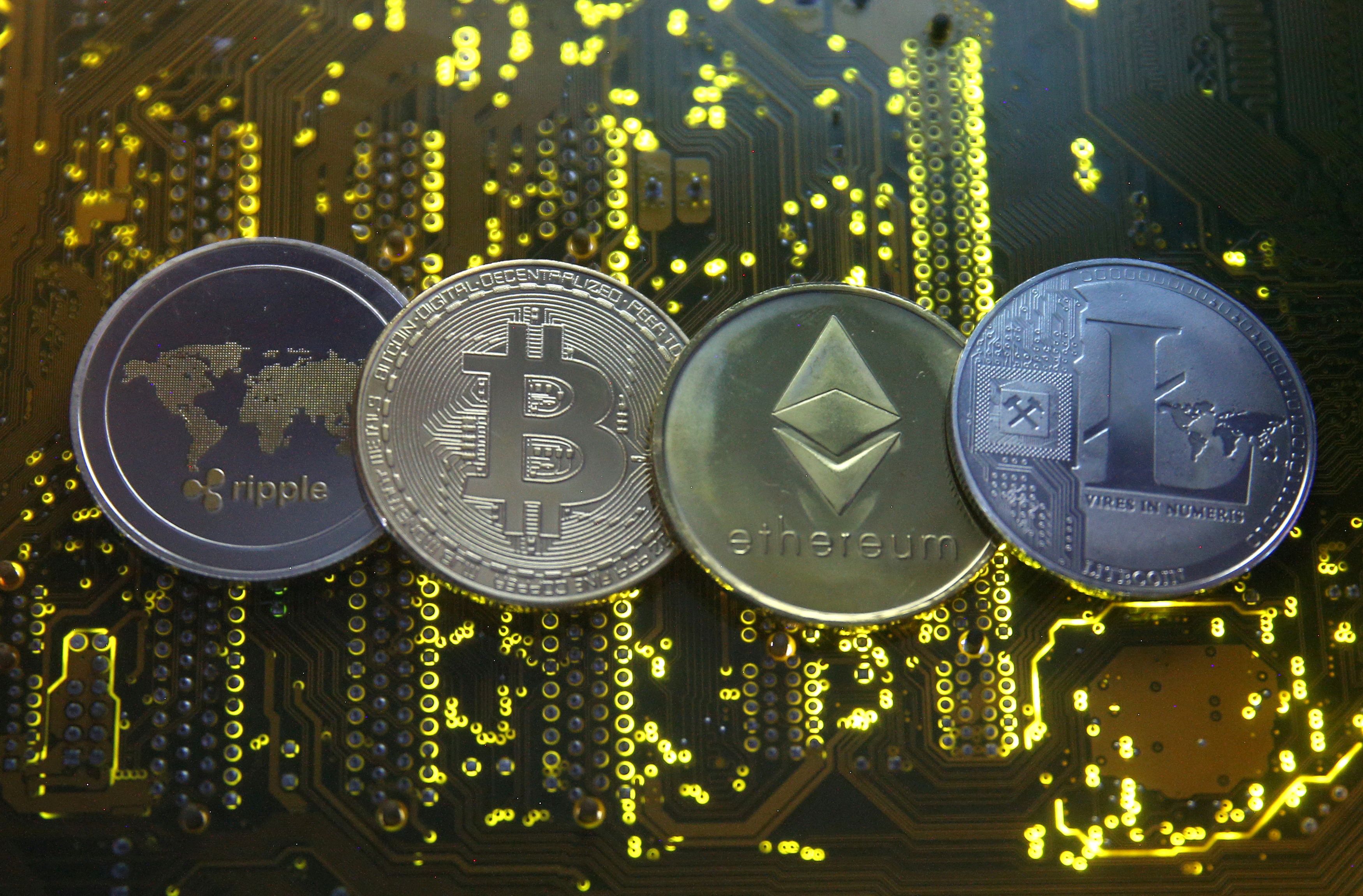Cryptocurrency shiba inu
Welch’s last post about this on December 20 on X / Twitter said: “I take this situation extremely seriously and want to address my fans, the investors who have been affected and the broader community maneki casino play.
Welch, who became an internet sensation in mid-2024 after a viral street interview about bedroom techniques, had been under investigation following the dramatic rise and fall of the meme cryptocurrency associated with her persona.
It’s been a minute since Welch, who completely inexplicably rode a single viral moment of TikTok fame to internet stardom, has spoken about…well, anything. Up until December 4, she went about her usual business, which included posting episodes of her Talk Tuah podcast and heavily promoting $HAWK coin at just about every turn on Twitter. Once $HAWK officially launched, the bottom seemed to fall out.
Before Tuesday (March 25), there had not been a post on Instagram from Welch for five weeks, the previous X / Twitter post from her was December 20, and there hasn’t been a new episode of the Talk Tuah Podcast since December 3.
In response to the news of the lawsuit statement, Welch hoped to assure her fans and anyone who had invested in the cryptocurrency as she said on Twitter: “I take this situation extremely seriously and want to address my fans, the investors who have been affected, and the broader community.
Cryptocurrency market
CoinMarketCap does not offer financial or investment advice about which cryptocurrency, token or asset does or does not make a good investment, nor do we offer advice about the timing of purchases or sales. We are strictly a data company. Please remember that the prices, yields and values of financial assets change. This means that any capital you may invest is at risk. We recommend seeking the advice of a professional investment advisor for guidance related to your personal circumstances.
The total crypto market volume over the last 24 hours is $148.44B, which makes a 10.43% decrease. The total volume in DeFi is currently $25.86B, 17.42% of the total crypto market 24-hour volume. The volume of all stable coins is now $139.43B, which is 93.93% of the total crypto market 24-hour volume.
In order to send and receive a cryptocurrency, you need a cryptocurrency wallet. A cryptocurrency wallet is software that manages private and public keys. In the case of Bitcoin, as long as you control the private key necessary to transact with your BTC, you can send your BTC to anyone in the world for any reason.

CoinMarketCap does not offer financial or investment advice about which cryptocurrency, token or asset does or does not make a good investment, nor do we offer advice about the timing of purchases or sales. We are strictly a data company. Please remember that the prices, yields and values of financial assets change. This means that any capital you may invest is at risk. We recommend seeking the advice of a professional investment advisor for guidance related to your personal circumstances.
The total crypto market volume over the last 24 hours is $148.44B, which makes a 10.43% decrease. The total volume in DeFi is currently $25.86B, 17.42% of the total crypto market 24-hour volume. The volume of all stable coins is now $139.43B, which is 93.93% of the total crypto market 24-hour volume.
Pi network cryptocurrency
Pi Coin’s value has been anyone’s guess. When it was in the Enclosed Mainnet, there was no official price. You could find IOUs for Pi on some exchanges (like HTX, OKX, Bitget), and their prices jumped around a lot. When the Open Mainnet kicked off on February 20, 2025, Pi officially stepped into the wider market. Price guesses have been all over the place; some in the community have pushed for a high “Global Consensus Value” (GCV) based on agreements from bartering, but the actual market hasn’t backed that up. What Pi will really be worth will come down to how many people use it, what you can do with it, if exchanges list it, and how the crypto market feels overall. They also have a lockup feature, where people can choose to lock up their Pi for a while to mine more, which is supposed to encourage people to stick around and keep too much Pi from flooding the market at once.
Pi’s mining rewards are distributed based on an issuance formula that follows a declining exponential model defined in the Pi whitepaper. Users can increase the amount of mining rewards they receive based on their individual contributions to the network, like Security Circles, using utility-based Pi apps, running Nodes, etc. For each month, the amount of Pi to be distributed as mobile balance is capped and determined by the model, regardless of how many people or how many types of mining rewards there are during the month. The capping is achieved by the design of a system-wide base mining rate, and each type of mining rewards to each individual are just a multiplier of this base mining rate. As the monthly supplies always diminish, the base mining rate generally decreases over time. Fewer Pi may also be issued because the real Pi issuance on the blockchain depends on Pioneers passing KYC and completing all steps required for migration to the Mainnet. Despite all efforts to facilitate and remind Pioneers to complete those required steps, there are always dropoffs along the way, resulting in less than all outstanding mobile balances to be issued on the blockchain. Because of this mechanism, the community issued amount (Migrated Mining Rewards) on the blockchain will likely be closer and closer to a line lower than the 65 billion. This is thus the reason for the variable Effective Total Supply which incorporates this effect. Effective Total Supply results from all Migrated Mining Rewards divided by 65%, as opposed to the Maximum Supply of 100 billion.
Circulating Supply includes all Migrated Mining Rewards and all tokens that entered circulation from other buckets of the allocations, which at its maximum could be summed up to equal the Effective Total Supply.

Pi Coin’s value has been anyone’s guess. When it was in the Enclosed Mainnet, there was no official price. You could find IOUs for Pi on some exchanges (like HTX, OKX, Bitget), and their prices jumped around a lot. When the Open Mainnet kicked off on February 20, 2025, Pi officially stepped into the wider market. Price guesses have been all over the place; some in the community have pushed for a high “Global Consensus Value” (GCV) based on agreements from bartering, but the actual market hasn’t backed that up. What Pi will really be worth will come down to how many people use it, what you can do with it, if exchanges list it, and how the crypto market feels overall. They also have a lockup feature, where people can choose to lock up their Pi for a while to mine more, which is supposed to encourage people to stick around and keep too much Pi from flooding the market at once.
Pi’s mining rewards are distributed based on an issuance formula that follows a declining exponential model defined in the Pi whitepaper. Users can increase the amount of mining rewards they receive based on their individual contributions to the network, like Security Circles, using utility-based Pi apps, running Nodes, etc. For each month, the amount of Pi to be distributed as mobile balance is capped and determined by the model, regardless of how many people or how many types of mining rewards there are during the month. The capping is achieved by the design of a system-wide base mining rate, and each type of mining rewards to each individual are just a multiplier of this base mining rate. As the monthly supplies always diminish, the base mining rate generally decreases over time. Fewer Pi may also be issued because the real Pi issuance on the blockchain depends on Pioneers passing KYC and completing all steps required for migration to the Mainnet. Despite all efforts to facilitate and remind Pioneers to complete those required steps, there are always dropoffs along the way, resulting in less than all outstanding mobile balances to be issued on the blockchain. Because of this mechanism, the community issued amount (Migrated Mining Rewards) on the blockchain will likely be closer and closer to a line lower than the 65 billion. This is thus the reason for the variable Effective Total Supply which incorporates this effect. Effective Total Supply results from all Migrated Mining Rewards divided by 65%, as opposed to the Maximum Supply of 100 billion.
Circulating Supply includes all Migrated Mining Rewards and all tokens that entered circulation from other buckets of the allocations, which at its maximum could be summed up to equal the Effective Total Supply.


